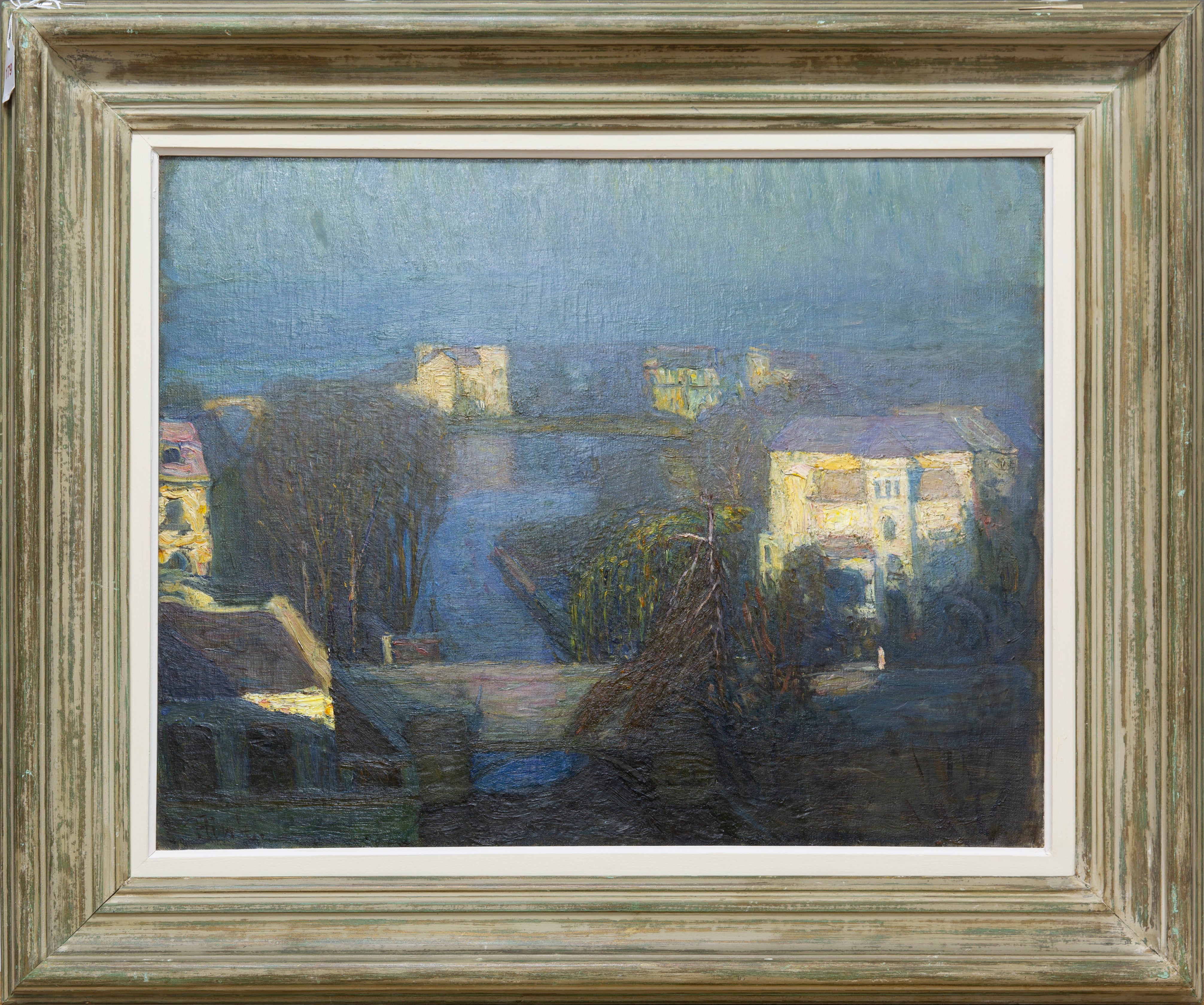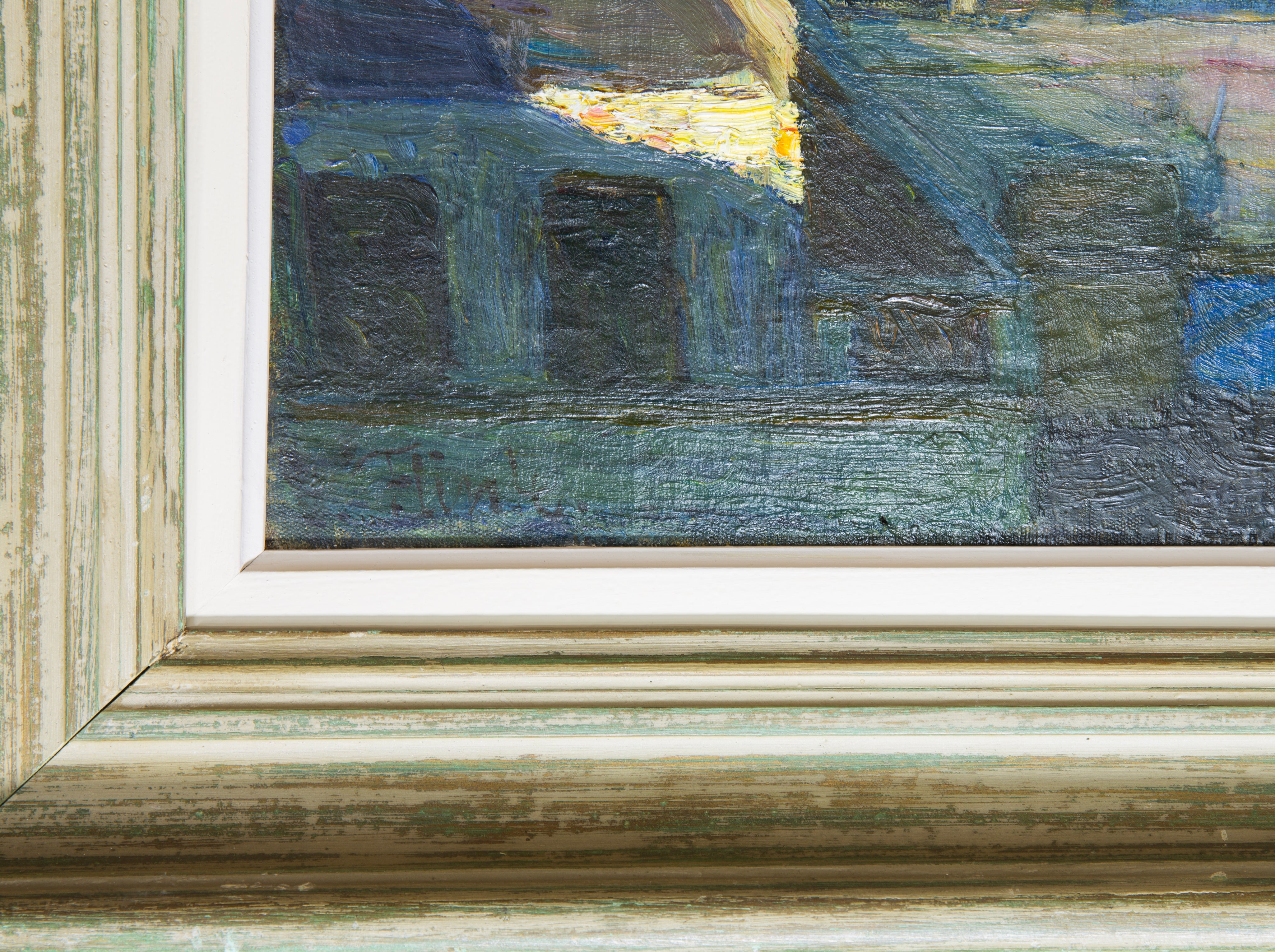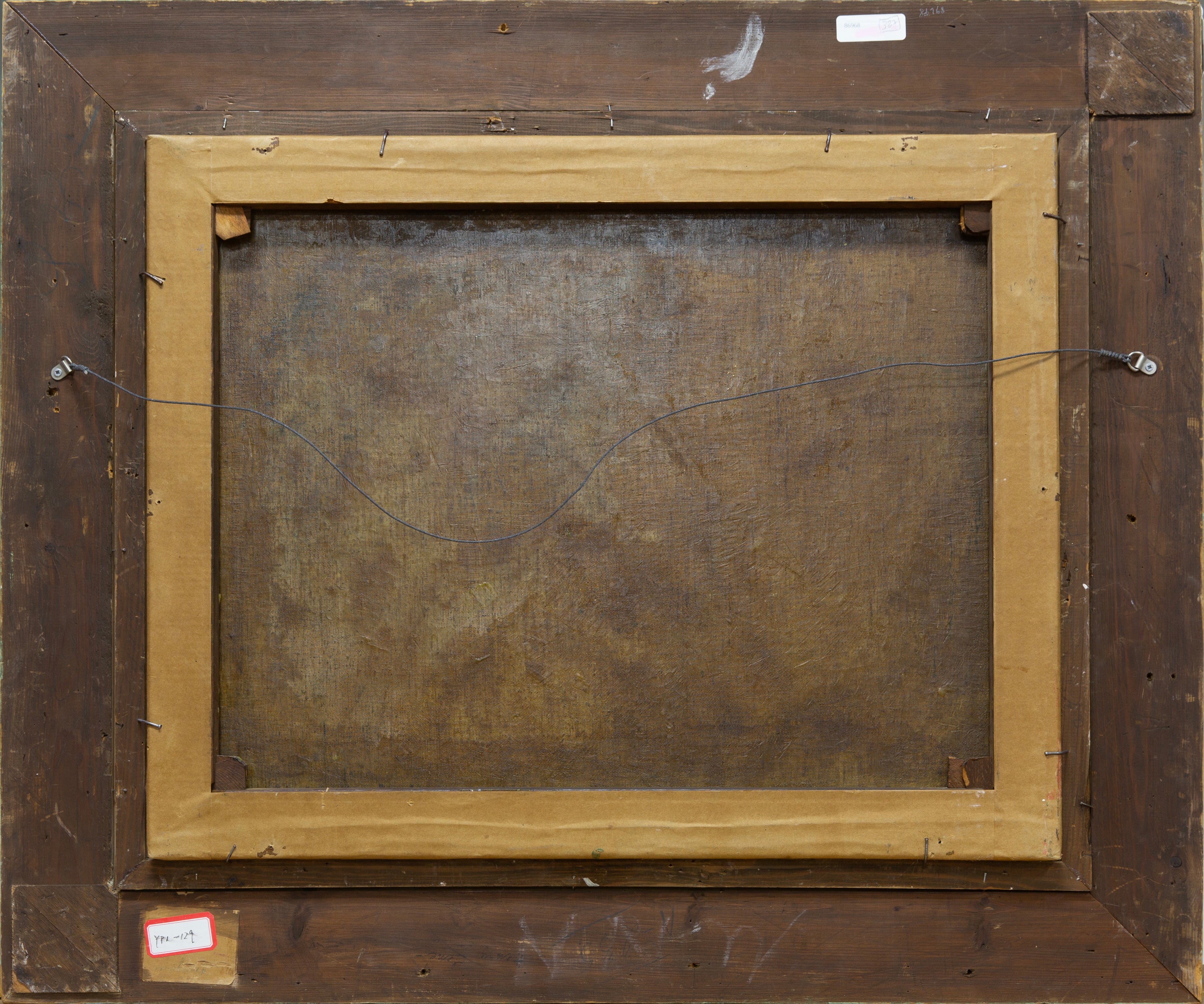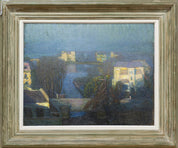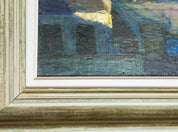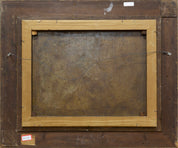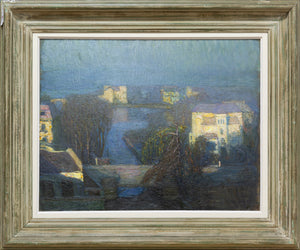The Village in Hamburg
Fritz Flinte
Artwork Details
Artwork Description
Title: The Village in Hamburg
Artist: Fritz Flinte (German, 1876–1963)
Date: n.d.
Medium: Oil on canvas
Dimensions: 20.9 x 26 in (53 x 66 cm)
Artwork Identification
The Village in Hamburg is a contemplative landscape painted in oil on canvas by German artist Fritz Flinte. The composition features a semi-rural view of Hamburg, imbued with a nocturnal or twilight ambiance, where architectural forms emerge softly from a veil of atmospheric blue. The scene evokes a mood of stillness, as the glow from a few lit structures punctuates the enveloping dusk.
Artistic Style and Influences
Fritz Flinte was an active figure in early 20th-century German art and a founding member of the Hamburg Secession. His style is closely aligned with the Northern European tonal tradition, marked by subdued palettes, expressive use of light, and an emotional intimacy with his subject matter. This work demonstrates an impressionistic yet disciplined treatment of light and color, likely influenced by his travels to Paris and Italy and his connection to the Hamburg School of Applied Arts.
Historical Context
Created during a time of significant artistic ferment in Germany, Flinte’s paintings reflect a desire to reconcile traditional techniques with modern sensitivity. Hamburg, his lifelong home, was both his muse and subject, often portrayed in moody, evocative tones that captured its changing post-war identity. The scene could possibly reference the interwar period or early post-war reconstruction, indicated by the quiet, almost melancholic stillness.
Provenance
Provenance documentation can be provided upon contact.
Condition and Conservation
The canvas is in very good condition, with a stable surface and well-preserved pigment layers. There is no notable craquelure or restoration. The frame is also in excellent shape and suits the tonal harmony of the painting.
Artistic Significance
Fritz Flinte remains an important figure in Northern German painting, noted for his contribution to the Hamburg Secession and his enduring commitment to capturing the mood of his native city. The Village in Hamburg serves as a quietly powerful example of his artistic language, offering collectors a poignant reflection of mid-20th-century German urbanity and memory.

